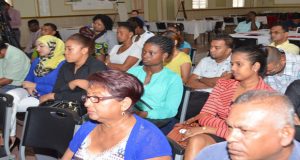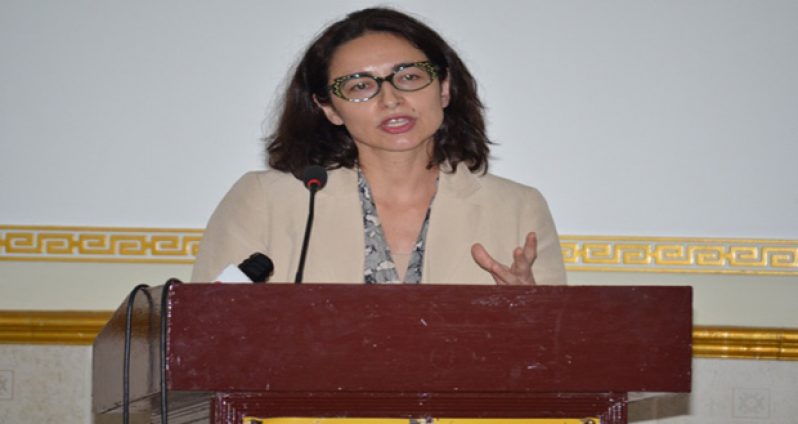THE Government of Guyana/Inter-American Development Bank’s (GoG-IDB) Second Low Income Settlement (SLI-2) programme has benefited about 19,000 low-income households over its seven years of execution. This was disclosed during an exit workshop held on Thursday at the Regency Hotel, Hadfield Street,Werk-en-Rust,Georgetown.Mission Leader of the IDB Ophelie Chevalier disclosed that the components of the projects have become examples in the regions. Chevalier said that the IDB has taken the component of the

hinterland pilot under the programme to Suriname and that country is currently implementing a similar pilot using operation manuals that were developed in Guyana. The hinterland component addressed the needs of eight communities in Region 1, through participatory design, self-building and using local materials and off-the-grid water and sanitation solutions. Training was also involved. Chevalier said that the success of the core house pilot within the site and services component of the project was very critical for the IDB, as well. She explained that this is because the site and services project is a very long and gradual venture which gives land and services after the houses. She explained that since the 80s, developing communities have not liked this project because it’s slow and now because of the success of its implementation in Guyana, the IDB can now show that this project could work if it kick-starts the increment process.
LIS 2 – a success story
Meanwhile, Makonnen noted that it was a moment for celebration as “…often programmes have issues and I do not think this is one of them….this is a success story of results, good project management, facing challenges and finding solutions,” she said. As part of the project over 400 core homes were constructed, the disbursement of 400 subsidies for the improvement of houses in squatter settlements and housing schemes, the disbursement of 208 subsidies for construction of homes and the repair of roofs in the hinterland in Regions 1 and 9, and the allocation of 206 houselots in Recht-Door-Zee Phase 2 to nurses, police officers and teachers.
The programme also realised the provision of services including roads, drainage networks, electrical and water distribution network to 8467 lots in new and existing housing sites, and 973 lots in regularised squatter areas. There was also the construction of 285 septic tanks, and the training of CH&PA staff in disciplines including engineering, and legal education. Also under the programme, an improved management system was completed, as well as a wide area network was installed to facilitate connection of regional housing offices in Regions 3, 6 and 10 to the main network. Twelve community development plans were prepared, community projects implemented and 4434 titles transferred to beneficiaries in housing schemes and squatter settlements.
The GoG/IDB, SLI-2 programme commenced in 2009 and was successfully phased out on June 30 2015. The programme was implemented by a team of senior managers headed by CH&PA’s CEO. The programme was implemented from the proceeds of a US$27.9M made available by the IDB. It focused on addressing issues of affordability and accessibility to housing for low-income populations and comprised the following components: coordinating agencies, partners and beneficiaries at the close-out workshop SLI-2 programme at the Regency Hotel, Hadfield Street. Present at the workshop were Minister of Communities Ronald Bulkan, Ministers within the Ministry, Keith Scott and Dawn Hastings-Williams, Minister of Indigenous People’s Affairs and Vice-President Sydney Allicock, Chief Executive Officer, (CEO) Central Housing and Planning Authority (CH&PA) Myrna Pitt and IDB Country Representative Sophia Makonnen.



.jpg)








